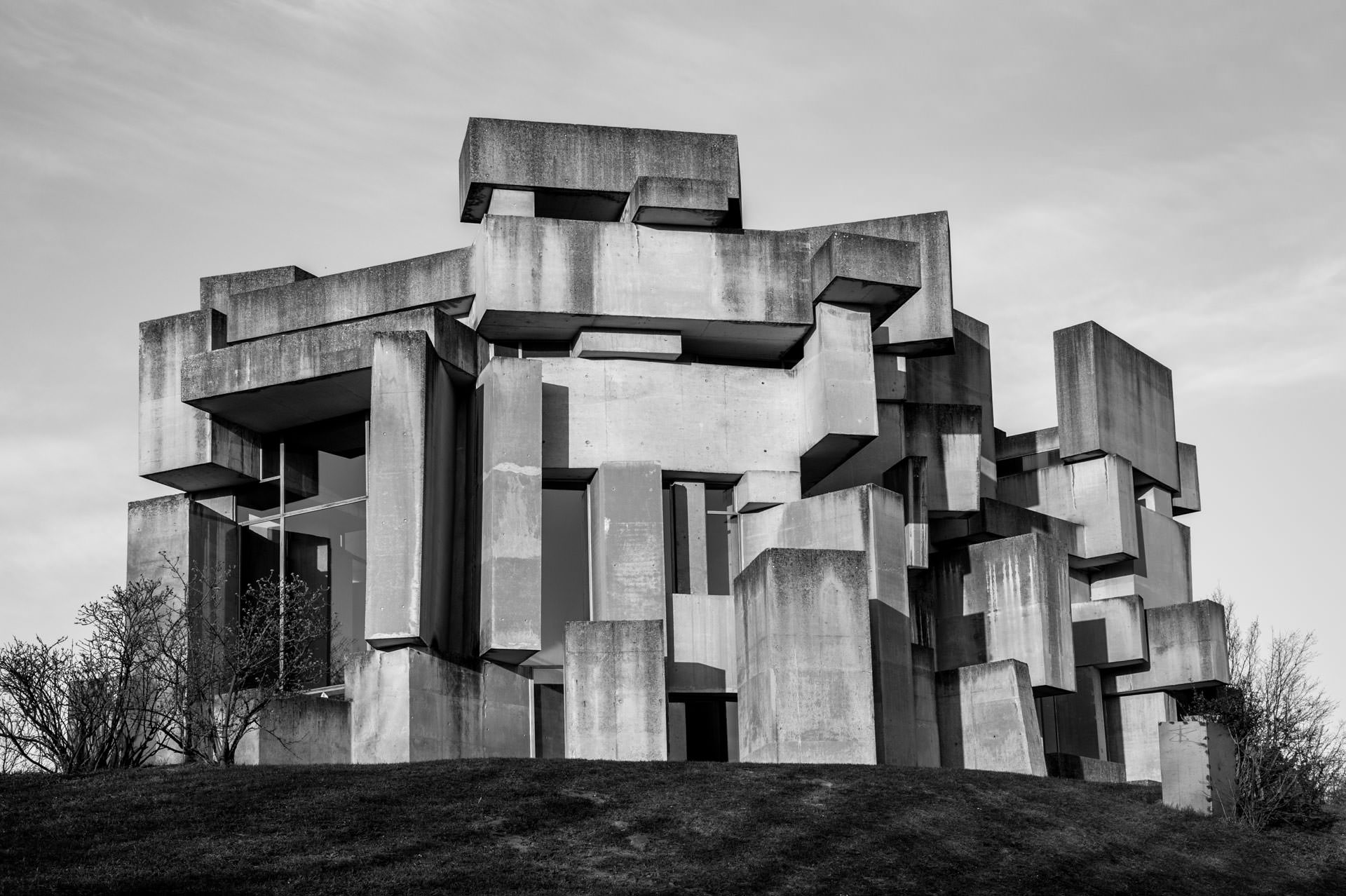Table Of Content

Le Corbusier had not finished a single project throughout the 1940s before being commissioned for this one; all of his suggestions for large-scale architectural projects had been denied. More well-known instances of Brutalist architecture, such as the Georgia Ministry of Highways (1971) blended the use of bare concrete and unpainted surfaces with the influences of Constructivism. The school developed on the impact of the Brazilian Carioca school, which began in 1935, but began using concrete in the postwar era, with the Brasil-Paraguai Elementary School being a significant early representation of its aesthetics. Hulme Crescents (1972) in Manchester was the greatest of the British street-in-the-sky projects, but it was demolished in 1994 due to architectural issues. Architecture and interior design may be subjective, but Brutalism has generated perhaps more than its fair share of controversy, which led to it falling out of fashion in the 1980s.
Sacred Modernity showcases "unique beauty" of brutalist churches - Dezeen
Sacred Modernity showcases "unique beauty" of brutalist churches.
Posted: Wed, 24 Apr 2024 10:00:00 GMT [source]
Key Artists
Interactive technologies are transforming brutalist structures into responsive environments. In urban contexts, brutalist buildings are being augmented with digital interfaces. Media screens, digital signage, and projection mapping add a futuristic layer. Concepts like virtual reality tours reimagine how people engage with brutalist heritage sites. Brutalist architecture has trends that make brutalist elements relevant for modern architects. Firstly, exposed concrete interiors provide an authentic, raw aesthetic appealing to minimalist tastes.
How to Cultivate Your Aesthetic & Evolve It
Aurelio De Anda is a graphic designer who works on merchandising, brand identity, print media and web design. Aurelio effectively incorporates elements of brutalism in his portfolio website. Brutalism is used to give more visual weight to individual elements or sections, which helps to attract visitors' attention to the right parts of the page as they’re scrolling through it. It originated in England with Alison Margaret Smithson and Peter Denham Smithson. These two architects were responsible for unique buildings made from concrete with unusual lines. Incorporating plants and greenery into brutalist interiors adds a natural element and softens the harshness of the concrete.
Why do people use Brutalist architecture?
He enjoys analyzing a variety of mediums through a literary lens, such as graphic novels, film, and video games. Polls of architects, on the other hand, have repeatedly determined it to be one of the top 10 design concepts in North America. This disagreement exemplifies the intense and divisive feelings that Brutalist architecture may elicit. The city council and mayor’s offices are on the second story, which is supported by enormous concrete pylons and features exposed crossbeams, while the administrative offices are on the precast top level, which has tiny windows enclosed by concrete cast molding.
Taichung City, Taiwan
The brutalist style is worth your attention if you’re looking for something big and bold for your next redesign. Because many themes cross over between modern contemporary, industrial, and brutalist, it’s easy to blend the three together if you want to pull several different elements into a room. In addition to concrete, brutalist architecture also favors using pillars and other geometrical shapes.
What qualities are considered web brutalism when we create a website?
Advanced modeling software allows architects to create complex curved and faceted brutalist-inspired shapes that would have been unbuildable decades ago. Digital fabrication methods like 3D printing and CNC milling permit new textural possibilities in concrete with intricate surface patterns. Technologies like vacuum forming and flexible formwork also facilitate flowing, sculptural concrete forms referencing brutalist monumentality in updated ways. Innovative building materials and sustainable technologies are being integrated into modern brutalist design. Thermochromic substances change color in response to heat, while photocatalytic concrete helps reduce air pollution.

Another famous example of Brutalist design is Boston City Hall, which follows the style inside and out with its intricate concrete construction on a large scale. On the campus of University of California San Diego sits the stunning Geisel Library, which is easily identifiable as a Brutalist building. Constructed predominantly of concrete, the building contains tiers of floor-to-ceiling windows. Stepping up close to the library, you feel the looming presence Brutalist buildings can evoke. Designed by Moshe Safdie, an Israeli-Canadian architect, Habitat 67 epitomizes Brutalist design. Looking at the complex, you immediately notice the boxy appearance that creates a pop-out illusion on a vast, large scale.
It has a very industrial feel and can appear quite cold because of the lack of bright colors. But if you’re looking for a mixture of contemporary and industrial, brutalist design choices may be right for you. The Brutalist style has inspired fashion designers to create bold and striking clothing and accessories. Designers often use industrial materials, such as metal and leather, to create avant-garde fashion pieces. And while authentic brutalist architecture has faded over the years, many iconic buildings around the world still stand to celebrate the style today. Brutalist design was often used for institutional buildings and government buildings, such as universities, libraries, and public housing projects, as it was seen as a symbol of progress, modernity, and social responsibility.
What Is Brutalist Architecture? Key Design Elements to Know - Better Homes & Gardens
What Is Brutalist Architecture? Key Design Elements to Know.
Posted: Tue, 17 Oct 2023 07:00:00 GMT [source]
The building was designed in 1961 and was built on the former grounds of Unzué Palace, where the residence of former president Juan Perón and his wife Evita had lived. Construction didn't actually begin until 1971, with the library being inaugurated in 1992. Political upheaval and continual changes in leadership led to long delays in the execution of Testa's vision. Forgo delicately curved legs and ornate details of more traditional styles, and instead opt for strong angles and curves in chunky proportions for furniture and casegoods. An oversize, low-slung sofa can not only reflect the period’s geometry but make a statement, too.
Today, the structure is deemed stylish, symbolizing “a fashionable picture of a heavily sedated ghetto that is no longer hazardous,” according to Winstanley. They fought against the focus on transplantable utilitarianism that had characterized the initial stages of modernist architecture in support of urban planning that represented the lifestyles of individual communities and generated community. The scallops of these twin towers are the instant eye-catchers on these Brutalist buildings, which are also reminiscent of the Art Deco style.
“Unlike styles that employ superfluous ornamentation to mask their core, in Brutalism, the structure itself becomes the ornament,” says Choui. There’s no more prominent element in Brutalist structures than concrete, whose color and texture is the hallmark of Brutalist design. The cost-efficient material is the basis for the look’s dramatic shapes, varying smooth and rough textures, and slightly drab neutral hues. Cities were growing and rebuilding during this time, which resulted in a surge of practical, efficient Brutalist designs for commercial, civic, and academic buildings. “The emphasis on simplicity and efficiency was essential for creating cost-effective yet sturdy buildings in the post-war era,” says Choui.
The structure was divisive from the start, with calls for its destruction commencing while it was still being built. In the decades after its construction, it has often been ranked as one of “the world’s ugliest buildings” in opinion polls. Both were left incomplete to produce color and texture variations, with the second-floor pylons being darker and coarser in look, and the third-floor pylons being lighter and more seamlessly repeated. The inverted pyramid design, which attracts attention downward through the vertical stripes of the window frames to the bottom level, as though highlighting the building’s public purpose, contrasts with the sensation of tone change achieved as the structure ascends. While the complex invokes ancient buildings, it also suggests more modern images, such as Cubist art or even an assembly of Lego blocks used by the architect to make preliminary models. When it came to the 1970s architecture period, Brutalism’s link with urban decay and crime was mirrored in the usage of Brutalist locales in films like A Clockwork Orange (1971), a dystopian image of violent, disenfranchised adolescents.
The two-story negative space in between was to help reduce the sound from the development labs in the above offices. Unfortunately, what we see now is not a complete picture of the original architecture, as the adjacent IKEA store demolished a portion of it to create a parking lot. Prior to its renovation in 2016 when it was clad in metal, shopping mall and commercial center TripleOne Somerset showed its Brutalist roots through a raw concrete façade. Influenced by the design of Boston City Hall, the building has an emphasis on the horizontal. This is evidenced by the protruding rows of staggered fins that create movement and provide shade. Since it was constructed in the 1960s, Boston City Hall has divided public opinion.
London's Trellick Tower, designed by architect Erno Goldfinger, is a 31-story Brutalist housing unit completed in 1972 that now has landmark status. Other significant Brutalist buildings in London include the Hayward Gallery in 1968 and the National Theatre (1976) in London's South Bank. Nonetheless, iconic works of Brutalism such as the Barbican Estate in London were finished during this period. One of the earliest examples of Brutalist architecture in America, Rudolph Hall houses the Yale University School of Architecture. Architect Paul Rudolph was greatly influenced by both Frank Lloyd Wright and Le Corbusier. Made of textured concrete, it has a complex floor place with over 37 terraced levels spaced across seven stories.

No comments:
Post a Comment